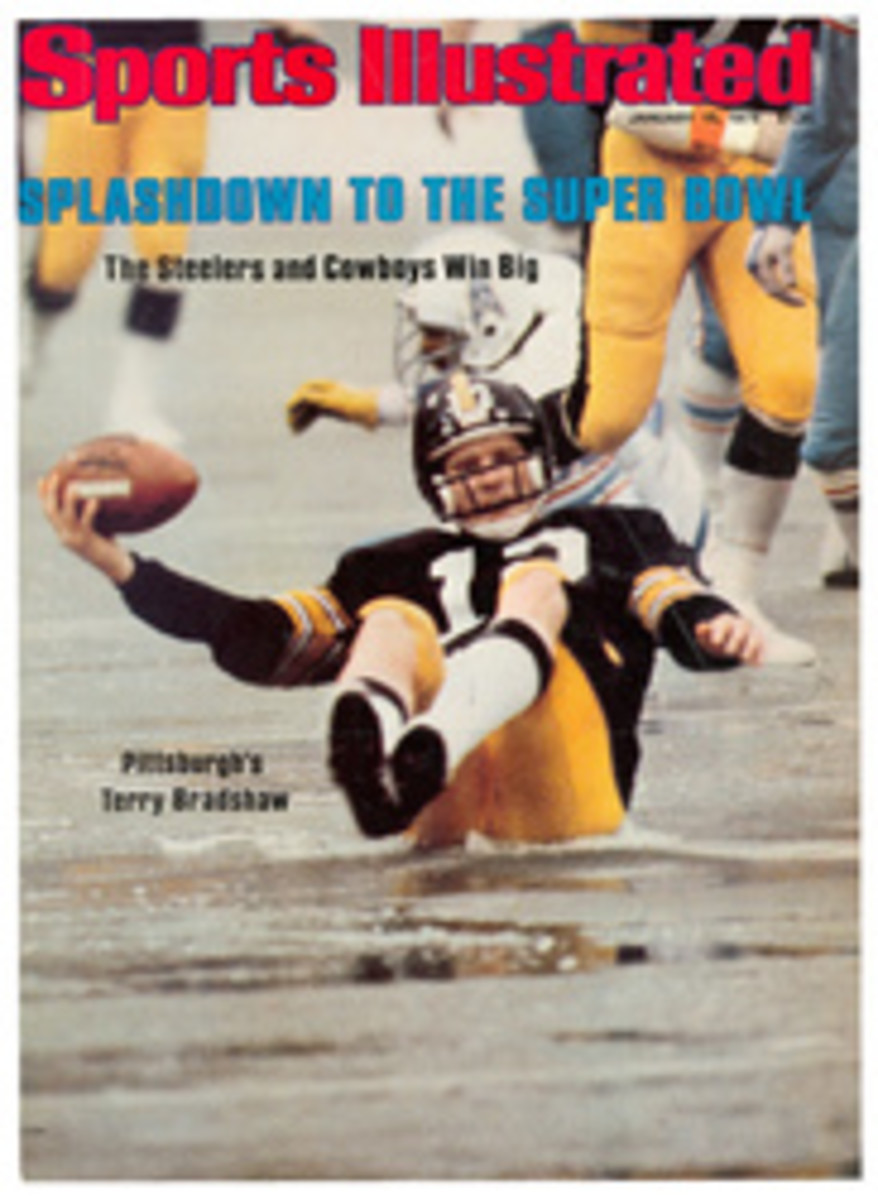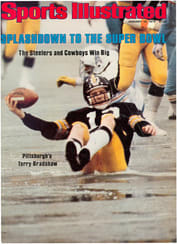
LET'S GIVE A SESQUIPEDALIAN CHEER FOR THE OLD SYNERGISTIC BALL GAME
Everybody knows about the explosion of interest in spectator and participant sports that has been booming away in this country since the end of World War II: the extraordinary proliferation of professional leagues playing a dizzying variety of sports, and the no less extraordinary popularity of personal physical fitness programs. Not so many people know, however, about a little explosion that has accompanied the big one: the growth of interest in sports as a subject for serious, indeed scholarly and often solemn, discussion in academic and intellectual circles.
This little explosion has produced a steadily increasing literature, consisting largely of articles in scholarly journals and books published by university presses. Many bear formidable titles: Perceptual Characteristics and Athletic Performance; Gods and Games: Toward a Theology of Play; Pervasive Sociological Themes in the Study of Sport; Sport: A Philosophic Inquiry. Further, many of them are couched in a vocabulary so arcane and sesquipedalian as to intimidate all but the most determined reader. This passage, from Edwin H. Cady's The Big Game: College Sports and American Life (The University of Tennessee Press, $14.50), is an example, albeit an extreme one:
"...The Big Game serves ends which are intrapsychically bonding and bounding, cathartic, egosyntonic, sublimating, transforming. Enculturative, they provide us symbolic tools, even serve for language, communicating, forging community. Communally they provide us with culture texts, in which to read the natures of self and group. Their esthetic effects are potent. They are festal and fraternal, ritual and perhaps religious, certainly synergistic."
I quote that passage not to poke fun at it (although I think it's ludicrous), but to point out the most immediate problem these books present—a problem also posed by another current example of the genre, Allen Guttmann's From Ritual to Record: The Nature of Modern Sports (Columbia University Press, $12.95). They attempt to deal with complex and important questions about the relationship of sports to society, but by employing the highly specialized languages of philosophy, theology, anthropology and sociology, they close themselves off to virtually all readers except those conversant in those languages. Instead of finding the general readership they should be striving to reach, in the end the scholars merely talk to each other.
That, of course, is in the nature of academic discourse, which has always tended to be exclusive rather than democratic. It is unfortunate, however, because lurking in these thickets of prose are some interesting and provocative ideas—ideas that too few readers are likely to have the patience to ferret out.
Allen Guttmann, for example, goes to some pains to draw distinctions among play ("any nonutilitarian physical or intellectual activity pursued for its own sake"), games ("organized play"), contests ("legal proceedings, wars") and sports ("playful physical contests...nonutilitarian contests which include an important measure of physical as well as intellectual skill"). From there he is able to move to a discussion of the characteristics of sport. At the risk of oversimplifying a complex argument, Guttmann—like many before him—finds modern sport to be a microcosm of modern society—which is to say, among other things, that it is egalitarian, specialized, organized, obsessed with statistics and records.
Guttmann is considerably more accessible, if only slightly more original, when he gets down to particulars, specifically his discussions of baseball and football. The peculiar appeal of baseball for Americans, he says, can be traced to its "primitive-pastoral elements," its "closeness to the seasonal rhythms of nature" and its tendency "toward extremes of quantification." In simpler words, baseball's stately rhythms and its proliferation of statistics touch both the ancient and the modern impulses in us.
As for football, Guttmann argues that it is not a manifestation of American violence and bellicosity (a theory that gained popularity with the left wing during the Vietnam War), but an outlet for aggressive emotions and energies that middle-class Americans suppress in their normal lives. He calls football an "institutionalized 'time out,' " a chance for those watching to blow off steam in a socially acceptable, harmless way.
I think he's right. And so, too, does Edwin H. Cady, who calls big-time college football "a fiesta, a communal and ritual party, a blowout at which you are authorized to take a moral holiday from work, worry and responsibility." In fact, in an instance of the overstatement to which Cady is prone, he calls it "the best party in American life?"
Cady's enthusiasm for college football knows almost no bounds (though he does offer some sensible suggestions for keeping the game under the control of the universities), and reflects an interesting aspect of his outburst of scholarly infatuation with sports. When you cut to the quick of it, most of these writers turn out to be fans at heart. Like the rest of us, they are up in the stands cheering. The big difference is that you often can't understand what they are cheering about.

